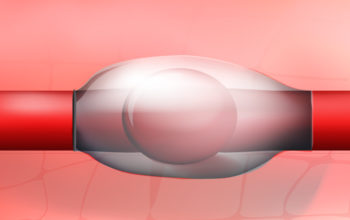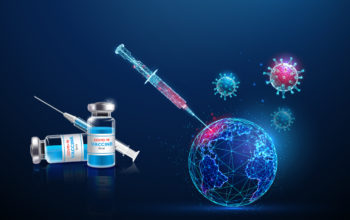
Date: 2nd August 2019
In 2016 there were over 138,000 organ transplants worldwide*. Whilst that number might sound encouraging, sadly, in the USA alone, around 20 people die a day waiting for an organƚ & if a patient is fortunate enough to receive a suitable organ, the rejection rate remains high despite the use of immunosuppressant drugs. Bioengineers, however, are offering new hope in the form of 3D bioprinting with the aim to create biocompatible whole organs, organ components or patches. One example of this earlier this year was the 3D-printing of the first complete human heart using human cells and hydrogels and, whilst the printed heart was smaller and didn’t it was vascularised and offered a real advance in biofabrication (Noor, Shapira et al. 2019).
One major obstacle to 3D printing is creating a viable scaffold which offers both structural support and, particularly in the case of the beating heart, flexibility. Now researchers from Carnegie Mellon University (Pennsylvania, US) led by Prof Adam Feinberg have used collagen to 3D print components of the heart using a new technique called FRESH. Collagen, as one of the most abundant proteins in the human body, is in theory is an attractive bioink for scaffold fabrication. However, the difficulty of using collagen as a bioink lies in the fact that collagen exists in a liquid form and, under standard conditions, cannot be printed readily in air. This technique, however, called Freeform Reversible Embedding of Suspended Hydrogels (FRESH), now allows collagen to be bioprinted in a support gel through a simple mechanism whereby the differential of pH between of the gel and the collagen allows the collagen to solidify. As a proof of concept, the paper published in Science reports 3D printing of five validated functional components of the human heart, from minute capillaries to full-organ scale, positioning the FRESH method as a potentially exciting advancement in recapitulating native tissues and organs in the lab.
The real beauty of FRESH as a method is in its accessibility, flexibility and cost. It can be adapted to print other tissues and organs, and bioink substitutes can be made with, for example, fibrin or alginate alone or in combination. Furthermore, the group have open-sourced their designs which should accelerate uptake of the technique at a relatively low cost and it can also potentially be used with existing printers. Additionally a spin-out company called FluidForm have commercialised the support gel under the brand LifeSupport. Founded by Feinberg and Andrew Hudson, their company mission is to dramatically expand the capability of 3D printing. Certainly, this technique and its availability should take the company one step closer to realising this mission.
For more information and access to the FluidForm press release please follow the links
https://3dprint.nih.gov/discover/3dpx-009853
https://www.fluidform3d.com/news/2019/7/30/fresh-3d-printing-used-to-rebuild-functional-components-of-the-human-heart
Lee, A., A. R. Hudson, D. J. Shiwarski, J. W. Tashman, T. J. Hinton, S. Yerneni, J. M. Bliley, P. G. Campbell and A. W. Feinberg (2019). “3D bioprinting of collagen to rebuild components of the human heart.” Science 365(6452): 482-487.
https://doi.org/10.1126/science.aav9051
*Those 2016 data are based on the Global Observatory on Donation and Transplantation (GODT) data, produced by the WHO-ONT collaboration.
Ƚ American Transplant Foundation

